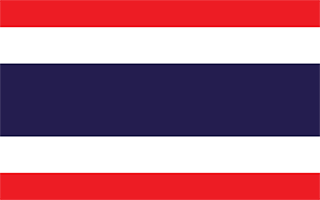Facts and Data
Webpages:
Official Unesco Page
Thai Fine Arts Department
Tourism Authority of Thailand
View photos from OUR PLACE the World Heritage collection
Basis Data:
Unesco World heritage since: 1991
Size of heritage: 289 ha
Coordinates:
Longitude: 100,561°
Latitude: 14,348°
Summary
Founded c. 1350, Ayutthaya became the second Siamese capital after Sukhothai. It was destroyed by the Burmese in the 18th century. Its remains, characterized by the prang (reliquary towers) and gigantic monasteries, give an idea of its past splendour.
Location on Map
Show bigger map on Openstreetmap
Historic City of Ayutthaya: A Glimpse into Thailand's Glorious Past
The Historic City of Ayutthaya, located in the Ayutthaya Province of Thailand, is a UNESCO World Heritage site that offers a captivating journey into the country's rich history. This ancient city, founded in 1350, served as the capital of the Kingdom of Ayutthaya until its destruction in 1767.
Ayutthaya was once a thriving metropolis and a major center of trade and diplomacy in Southeast Asia. Its strategic location along the Chao Phraya River made it a hub for international commerce, attracting merchants from China, India, Persia, and Europe. The city flourished under the rule of several Ayutthayan kings, who built magnificent temples, palaces, and statues, showcasing the grandeur of their empire.
However, Ayutthaya's prosperity came to an abrupt end in 1767 when it was invaded and razed to the ground by the Burmese army. The once-majestic city was reduced to ruins, and its inhabitants were either killed or taken as prisoners. The fall of Ayutthaya marked a significant turning point in Thai history, as the capital was relocated to present-day Bangkok.
Today, the Historic City of Ayutthaya stands as a testament to the resilience and cultural heritage of Thailand. The site covers an area of approximately 289 hectares and is divided into three zones: the inner city, the outer city, and the island city. Each zone contains numerous archaeological sites, including temples, monasteries, and royal palaces.
The inner city, surrounded by defensive walls and a moat, was the heart of Ayutthaya's political and religious power. Here, visitors can explore the iconic Wat Mahathat, known for its famous Buddha head entwined in the roots of a banyan tree. The nearby Wat Ratchaburana, with its towering prang (Khmer-style tower), offers panoramic views of the city.
The outer city, located outside the walls, was primarily a residential area. It features the impressive Wat Chaiwatthanaram, a temple renowned for its Khmer-influenced architecture and picturesque riverside setting. The temple's central prang and surrounding pagodas provide a glimpse into the city's former glory.
The island city, situated between the Chao Phraya River and the moat, was the commercial center of Ayutthaya. Here, visitors can explore the bustling markets, ancient ports, and remnants of the city's once-thriving river trade. The Ayutthaya Historical Study Center, located on the island, offers a comprehensive overview of the city's history through interactive exhibits and artifacts.
Efforts have been made to preserve and restore the Historic City of Ayutthaya, ensuring its cultural significance endures for future generations. The site's inclusion on the UNESCO World Heritage list in 1991 has helped raise awareness and attract visitors from around the world.
Visiting the Historic City of Ayutthaya is like stepping back in time, allowing visitors to immerse themselves in the grandeur and mystique of ancient Thailand. Its rich history, architectural wonders, and serene atmosphere make it a must-visit destination for history enthusiasts and cultural explorers alike.
Hotels and places to stay
Ayutthaya Kantary Hotel & Serviced Apartments
sala ayutthaya
Ban U Thong Accommodations
Silp-Pa Phra Nakhon Si Ayutthaya
Athithara Homestay
The Old Palace Resort
Luang Chumni Village
Baan Kong Homestay
Q Zone Boutique
Phrakhun House
Videos from the area
Videos provided by Youtube are under the copyright of their owners.














